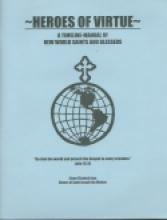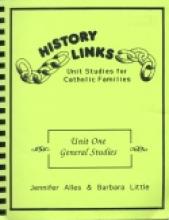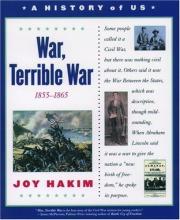No name
here.now. a catholic guide to the good life
The world claims to have the answers, but what are they? Please yourself, answer to no one, claim your truth, reject any close-minded or intolerant positions, be tolerant and diverse and accepting of other truths, whatever they are, except if they are intolerant.
If these are the answers, what are the questions?
When young people ask themselves:
- Who am I?
- What do I want out of life?
- Why is everything so complicated?
- Where will I find true happiness? and
- How do I choose right from wrong in a world filled with so many different answers?
they want the truth, even if it is challenging.
Amy Welborn has written here.now. as a guide book for today's young people, Catholic and Christian. Welborn's style is light, breezy, funny and pointed: the truth is found in the Catholic Church, and if you don't understand why, it's simple: Because Jesus told us so.
She continuously rejects answers such as, "because there is a rule that says..." or "because the Church said so." Welborn reminds us that it's not about "have to" (as in "I have to go to Mass today", or "will I have to confess this sin?") She continues to bring us back to the thought that if we want to have a relationship with God, we can do it best by getting to know His Son, Jesus, and we figure out Jesus best by reading the Bible, going to Church, and receiving the sacraments. It's that simple.
I was prepared to find this book too simplistic, too small. It is a very thin book, only 118 pages with short paragraphs and an easy-to-read type face. However, I found myself totally absorbed in it, able to quickly understand it, and even came away from it with some easier ways to talk about the faith with my relatives and friends.
I think this book would be good for older teens ("mature" 14 or 15 and up, due to the chapter on morals) and young adults to read as an overview of our faith.
This would be a great gift for a confirmand, a fallen-away Catholic, a lukewarm relative, or any person who needs to figure out how to be a mature, adult Catholic in this Church. It is perfect for anyone who might not read something more in depth. I think this book serves a great purpose in being a short and brief but thorough description of the good life: life as a Catholic in full communion with Jesus though his church.
Heritage Memo Game
A memory game showing 36 pictures of outstanding sites worldwide.
While looking for something fun to add to this year's curriculum purchases, I discovered this memory game in the Montessori Services catalog. I can't tell you how much fun we've had with it. The whole family down to the 2 1/2 year old have enjoyed rousing games of memory while learning about important historical, cultural and religious sites from around the world. The cards are approximately 2 inches square with full color pictures of famous sites. There are a high percentage of Catholic sites:
Cathedral of Aachen, Germany
Palace of the Pope, Avignon France
Chartres Cathedral, France
Cathedral of Cordoba, Spain
Cathedral and Monastery "Victorious Holy Maria" in Portugal
Cathedral of Cefalu in Sicily
Church of Sagrada Familia, Spain
Reims Cathedral, France
Santiago de Compostela Cathedral, Spain
Other sites are:
Dome of the Rock, Jerusalem
Stonehenge, Great Britain
St. Basil's Cathedral, Moscow
Cathedral of Canterbury, Great Britain
Nemrut dagi, Turkey
Easter Island, South America
Temple of Katmandu, Nepal
Schwe-Dagon-Pagode, Birma
Stupa of Borobudur, Indonesia
Todaidshi-Temple, Japan
Amun-Temple, Karnak Egypt
Uxmal, Mexico
Madrese Schir-Dar, Russia
Tula, Mexico
Taj Mahal, India
Temple of Abu Simbel, Egypt
Hagia-Sofia, Turkey
Maccu Picchu, Peru
Acropolis, Athens
Sphinx and Great Pyramid
Wailing Wall, Jerusalem
Menhirs of Carnac, France
Temple of Hera, Italy
Leaning Tower of Pisa, Italy
Athos-Monasteries, Greece
Malawiya Minaret, Iraq
Schah-Mosque, Iran
Included with the game is a fold-out sheet with black and white images of each of the sites along with a brief description and location.
72 cards, Made in Austria
Herodotus and the Road to History
Donated for review by Bethlehem Books.
Heroes of God's Church
I think the author does an admirable job in achieving his purpose. We are shown how the Saints were real people who struggled with things like bad tempers and parents who just didn't understand their religious fervor. Some became great saints by just doing the little everyday things well and out of love while others showed incredible heroism through the most agonizing tortures and martyrdom.
The book covers 25 Saint stories, from 6 to 18 pages each, with comprehension questions for each story. We are presented with a variety of Saints of every age with a true diversity of personalities, difficulties to overcome and social classes. The chronological order and selection would also make this a very worthwhile supplement to a study of World History.
The comprehension questions seem suited to mid-grade school (perhaps grades 3-6) but the stories themselves would be appropriate for a wide age range (probably from first grade through adult if care is taken with regard to some of the "scarier" martyr stories for the very young ones).
Heroes of Virtue
Many thanks to Catholic Heritage Curricula for donating this book for review.
High School of Your Dreams
History Links - General Studies and Ancient Egypt
History Links: Unit Six – Ancient Greece
This unit on Ancient Greece is not a structured, day-to-day lesson plan. Rather, it is organized to guide you to develop your own daily plans and longer term assignments. The book begins with traditional Catholic prayers and patriotic hymns derived from Greek that can be learned during the unit and used for memorization, dictation, copywork or spelling. Next is a lengthy list of topics that will be studied and a listing of specific books, church documents, videos, and internet sites. These lists will help you to gather materials for your students to use during the study of Ancient Greece. The "preparation" section ends with vocabulary and spelling lists and a timeline.
The bulk of the unit is organized in outline style, with many, many suggestions of things to do as you explore Ancient Greece. Each of the topic headings and activity suggestions includes background teaching information, which I think is one of the best features of the program. The activity suggestions are coded with an age recommendation and a subject classification. For example, some activities are best-suited for preschoolers or elementary students, while others are best for middle school students or high school students. Each page also includes ideas for including babies and toddlers in the activities! Main subjects covered include religion, language arts, literature, research skills, critical thinking, and geography. Some suggestions also include study in foreign language, math, science, citizenship, architecture, art, crafts, drama, music, and physical education.
The authors recommend spending approximately 2 months on this unit, but there are so many things to do that you could easily spend much longer on this time period. I think that these courses are wonderful all by themselves, but they would also be very useful as a supplement. If you are enrolled with a formal curriculum such as that of Kolbe Academy or the Angelicum Academy, you could use History Links to add some fun projects and a Catholic perspective to the courses. History Links really are family-centered education, making learning fun and memorable.
History of Us, Volume 6: War, Terrible War
This is an interesting, very readable overview of the Civil War. There is a significant focus on the issue of slavery as a plague upon American culture of the time. The author's basic thesis is that, while different people fought for different reasons and the focus was especially blurred when the war began (when there was more emphasis on preservation of the union), the war was essentially fought over the issue of slavery.
Although the author herself is not consistent on this issue in her final volume, a lot can be learned from studying her stories, ideas and conclusions about slavery in light of the current abortion debate. A thoughtful older student might even study this volume thoroughly and compare it with Hakim's significantly-problematic treatment of the 20th century. Hakim makes a significant effort to be fair to the intentions of both North and South while clearly believing that the North has the upper moral hand on the slavery issue.
Although the writing style is quite engaging, all the side bar quotes and information do make a cover-to-cover reading a little choppy. This volume could be used very beneficially as a "spine book" to tie together a study of the Civil War with an emphasis on great stories such as Uncle Tom's Cabin and Killer Angels. Most approriate for grades 6-8 but usable for anyone studying the Civil War. The book can have the effect of kindling an interest in the topic and inviting the student to learn more on their own.








